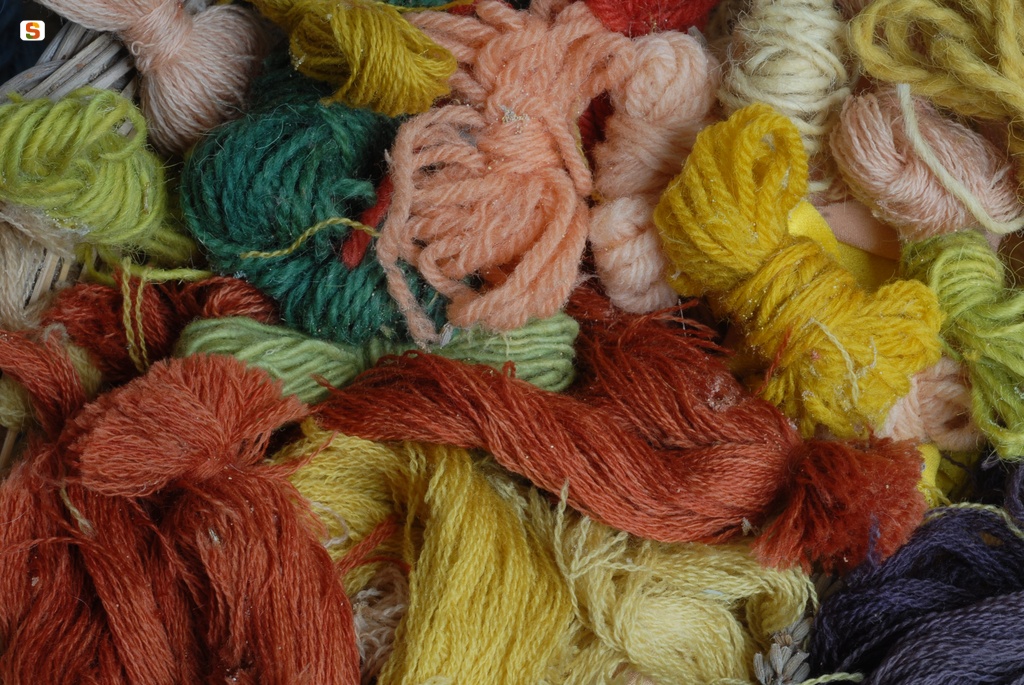
In the economy and culture of Sardinia, the agricultural and pastoral system has always played a pivotal role. The processing of sheep products, such as milk, cheese, meat and wool, are closely related to those traditions that for centuries have characterized the daily life of Sardinia, up to a past not that far away. Sardinian sheep wool has always been plentiful, although its quality has always been low, due to the cornea composition of the fibers that makes it rough. Sardinian women have been working in the processing of local wool, exploiting in different ways the characteristics of this material to obtain clothes of different use, both daily and festive apparel, with aesthetic and functional results ranging from coarse to fine clothes.
Sardinian wool is instinctively associated with the large production of orbace, warps and wefts made entirely of wool, and treated with a final fulling that, by exploiting the properties of the felt fiber, gives the particular waterproof profile. Orbace has long been produced in various weights and textures, from the most robust for the tailoring of work clothes and accessories, to the finer fabrics used for traditional festive attires, both for men and women.
Traditionally, the local wool dyed with plant-extracted colours, was used to weave trousseau elements, such as chest covers, bedspreads and festive saddlebags, combined with cotton, linen, raw import wool and gold threads. Typical products are also the two-length blankets featuring Sardinian wool warps and wefts woven on vertical looms.
Some information about Sardinian sheep The sheep breed typical of Sardinia is the Sarda breed. It is mostly a milk-producing breed, in the past bred only in Sardinia but currently exploited in Italian regions, such as Tuscany, Lazio and Umbria. It is a native breed, the origin of which can be traced back to the great Syriac stock that several breeds widespread in the Mediterranean basin came from.
In the past, in different areas and at different times, several interbreeds have been attempted between Sardinian sheep and other species, in particular the merinos breen, with the purpose of enhancing their characteristics and increasing the quality of the wool produced. However, cross-breeds did not prove to be successful and did not go beyond the experimental stages, since, from the very beginning, it was clear that they tended to decrease milk production, that used to be the strength of the Sarda breed, a characteristic the shepherd could hardly give up.

